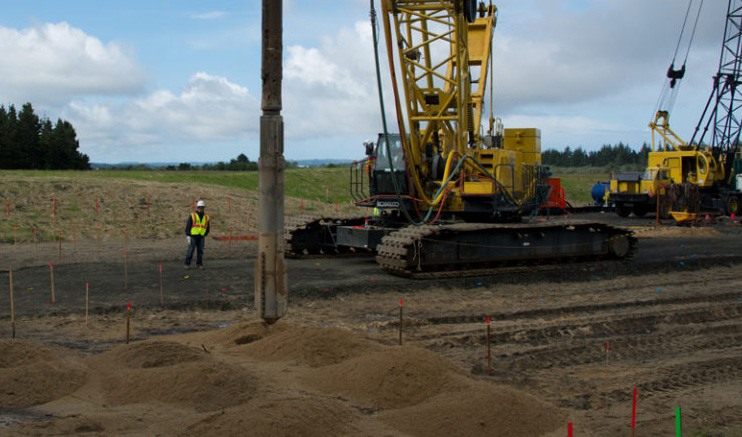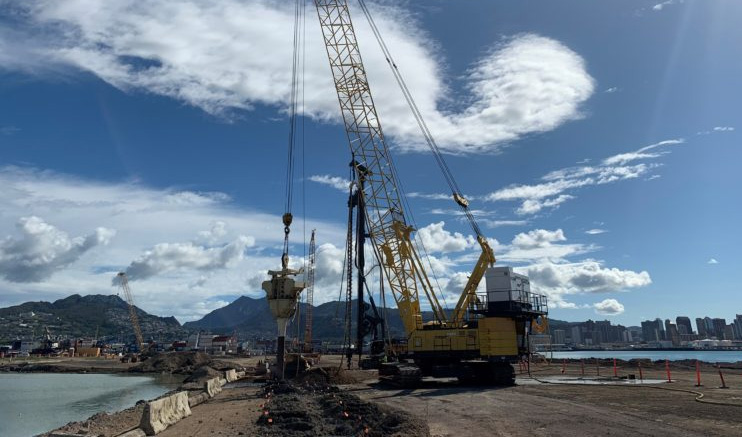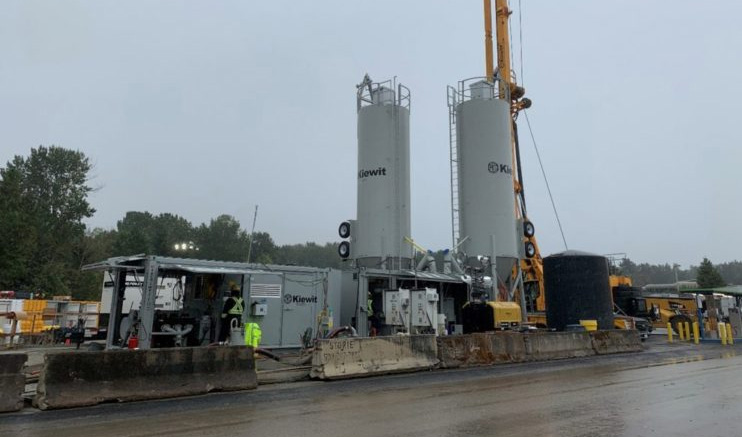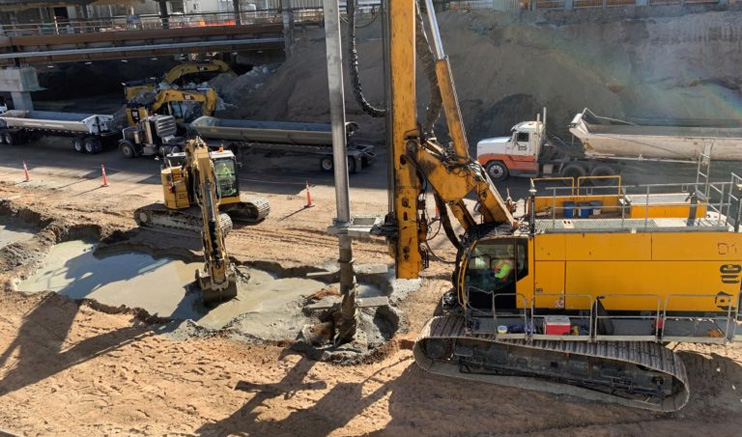Ground Improvement
Ground Improvement Techniques
Unstable soil conditions can threaten the integrity of any construction project. Kiewit’s ground improvement experts provide engineered solutions that enhance soil stability, increase load-bearing capacity and mitigate settlement risks — ensuring a solid foundation for any structure. With expertise in aggregate piers, vibro compaction, vibro replacement, jet grouting, permeation grouting and soil mixing, we customize solutions to meet the specific needs of each project.

Vibro compaction
Vibro compaction is a proven ground improvement technique that densifies loose granular soil at depth using a vibratory probe. The probe delivers horizontal vibrations while being repeatedly inserted and withdrawn in a precisely controlled grid pattern, increasing soil density and reducing settlement risks.

VIBRO REPLACEMENT (STONE COLUMNS)
Stone columns are produced using a vibro replacement improvement method. This method densifies loose granular soil at depth using a vibratory probe to deliver horizontal vibrations and replacing the displaced soil with stone backfill to reach a desired densification.

Jet Grouting
A ground improvement/replacement technique using high pressure fluids (cement grout, air and water in prescribed combinations) under carefully controlled and monitored installation parameters, to construct an improved soil mass by eroding and mixing with the soils in situ.
Permeation Grouting
The injection of grout into the interstitial voids between soil particles or into fissures and fractures in rock to increase one or more of the strata’s strength, impermeability or unit weight.

Deep Soil Mixing
The mechanical mixing of soil in situ with a cementitious binder, introduced through, and constructed with, a paddle style auger/shearing tool or a counter-rotating wheeled cutter, to create an improved soil mass.